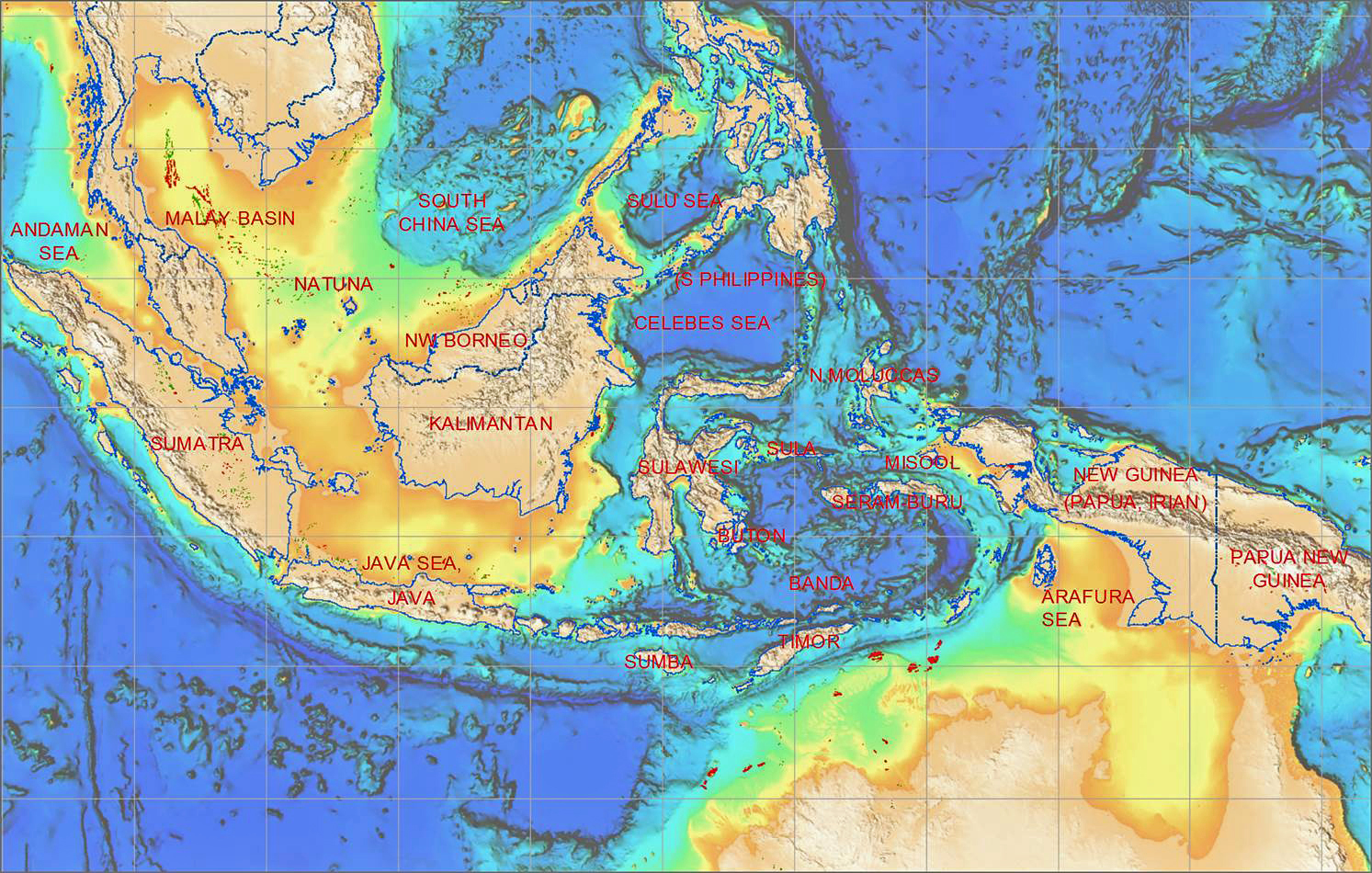INTRODUCTION
The 2020 edition of the ‘Bibliography of the geology of Indonesia and surrounding areas’ is now available online here. This edition 7.1 of June 2020
contains >23,720 titles (>800 new entries since Ed. 7.0), on 2826 pages, and with >5900 links to open-access papers.
The first edition of this bibliography was published as a 700-page pdf addendum to: J.T. van Gorsel (2009) A bibliography and brief history of Indonesia geology literature. Proc. 33rd Ann. Conv. Indonesian Petroleum Association, Jakarta 2009, vol. 1, p. 429-460 (on CD-ROM edition). The 3rd edition (1099p.) went online in May 2011; followed by editions 4 (1253p.; November 2011), 5 (1655p.; October 2013) and 6 (2202p., ~19,400 titles; October 2016) and 7.0 (2726p., 22,925 titles, July 2018).
The complete bibliography is a ‘pdf’ file of 2826 pages and can be downloaded here (recommended if wanting to find authors or keywords in titles). If interested only in certain areas, individual chapters with summaries of geology and recommended reading can be downloaded from the web pages dealing with these areas. Please note however, these chapter pdfs have not been updated with this release and reflect the content as of July 2018. The current and complete pdf can been found using the following link.
Purpose
The purpose of this bibliography is to facilitate access to the vast heritage of geological studies in Indonesia, as well as that of surrounding areas
whose geological characteristics extend into parts of Indonesia (mainland SE Asia, SW Pacific, NW Australia). Awareness of the vast body of existing
literature on the geology of Indonesia should improve the quality of future work, limit redundant research and maintain credit where credit is due.
Many of the papers listed here are hard to find or have been ‘forgotten’. Lack of access to geoscience libraries, foreign language barriers, cost of
purchasing and available time for reading causes much of this valuable geoscience heritage to be under-utilized. Many of the ‘old’ papers still contain
information that cannot be found elsewhere, or research results that would be difficult to replicate today.
This is a reminder to the geoscience community that ‘we are standing on strong shoulders’ and reading is important. The publications in this listing
contain the results of work by thousands of geologists, tens of thousands of men-years and many billions of $$ on survey work and studies ! And
remember: the most recent paper on a topic is not always the most useful.
Publication trends through time
Figures 1, 2 and 3 illustrate historic trends in the publications on the geology of Indonesia, i.e. total numbers of publications, areas of interest, dominant languages, areas of interest and nationality of lead author, which all changed significantly trough time, reflecting changes in political situations, economic drivers and scientific developments over the last 150+ years. These graphs only include the ~11,000 papers that deal specifically with geology of areas in Indonesia, and do not include 'special topics' or 'Circum-Indonesia' papers (~50% of total in this Bibliography 7.0).

Fig. 1- Number of publications on the geology of Indonesia from 1850-2017, categorized by geographic areas. This graph represents a subset of ~10,630 geological papers in the current Bibliography that are tied to specific areas of Indonesia.
Four major periods may be distinguished (Figure 1):
(1) 1850-1905: Geoscience publications from this early period are mainly summaries of mineral, coal and oil exploration work, or initial reconnaissance
surveys. They are generally short, poorly illustrated papers in Dutch and in German, focusing mainly on western Indonesia. Exceptions to this rule were
the impressive first regional descriptions and maps by Verbeek on West Sumatra (1875), Bangka- Belitung (1897), SE Kalimantan and Java-Madura (1896).
(2) 1905-1940: This was a period of significant expansion of mapping and other geological studies, with many new hydrocarbon and metals discoveries. A
systematic mapping program of Sumatra and Java was started by the government geological survey. There was an increase in industry, government and academic reconnaissance surveys into Eastern Indonesia and New Guinea. Many large volumes on surface
geology, paleontology, petrography, etc., were published of all parts of Indonesia. Principal languages were still Dutch and German, but English became increasingly common in the 1930's.
(3) 1940-1970: Survey and publishing activity had already started to slow down during the Great Depression of the 1930's, but came to an almost complete standstill between 1941 and 1950 (World War II, Revolutionary years), followed by very low levels
of research and publishing until the late 1960's. The oldest geology paper in the bibliography in Indonesian language is from 1962.
(4) 1970-2018: After political changes in the late 1960's expansions of investment, exploration and research led to spectacular growth in resource-related and academic geological publishing after 1970.
The data in this bibliography suggests the total number of geoscience publications on Indonesia:
- increased from about 100 papers in 4 years in 1970 to >1000/ 4 years after 2005;
- it decreased after the Asian financial crisis of 1997, but came back to new record levels after ~2010.
Before 1945 the main languages of publication were Dutch and German, with increasing share of English-language papers after ~1915. Since 1945 by far the dominant language has been English, with increasing numbers of papers in Indonesian since the late 1970's (Figure 2).

Fig. 2- Number of Indonesia geology publications through time, by language. Prior to 1945 the main languages of publication were Dutch and German, after which English became dominant. Indonesian has been the second most common language of publication since the 1970's.

Fig. 3- Number of Indonesia geology publications through time, by nationality of first author.
Figure 3 shows the number of Indonesia geology publications through time, categorized by nationality of first author. This graph shows that until the late 1950's virtually all publications on Indonesian geology were by foreign nationals. After this, the number of publications with Indonesian nationals as first author gradually increases until ~60% of total today.



